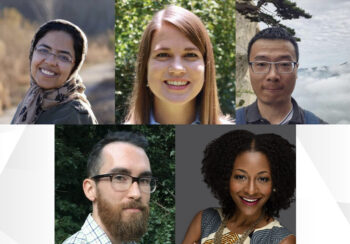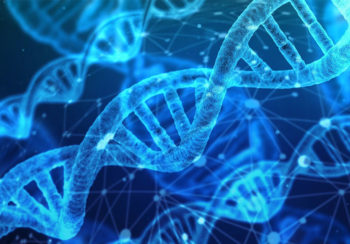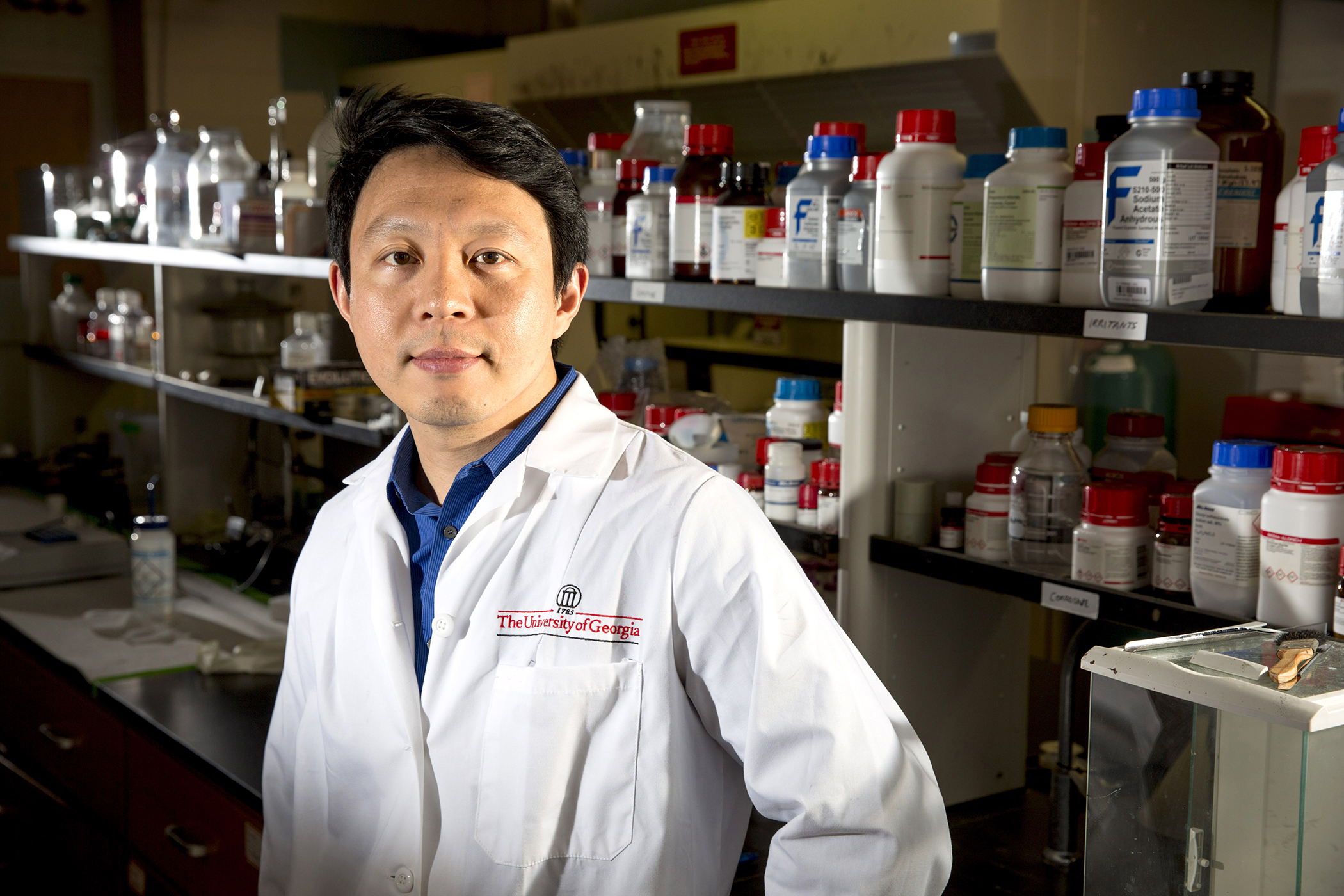Five UGA scholars have received Faculty Early Career Development Program (CAREER) foundation awards in 2024 from the National Science Foundation for their research and potential as academic role models.
The awardees are assistant professors Melanie Reber (Franklin College of Arts and Sciences Department of Chemistry), Christopher Newton (Department of Chemistry), Qin Lu (College of Engineering), Guoyu Lu (College of Engineering), and Nadja Zeltner (Franklin College of Arts and Sciences Department of Biochemistry and Molecular Biology and the Center for Molecular Medicine).
Collectively, the awardees received over $3 million to fund research, labs, equipment, and new educational opportunities for students. The award is given to 500 recipients each year and is designed to assist faculty in projects that integrate education and research.
Reber plans to use this award to examine molecular dynamics in electronic and vibrational states using new techniques.
“Students involved in the project will gain highly technical training in lasers, optics, and electronics, which are relevant to a range of high technology fields including quantum technologies,” Reber said.
Newton received his award for a research program focused on developing new organic chemistry strategies and reactions to provide more efficient access to molecules such as pharmaceuticals and chemical probes.
“This NSF CAREER award funds our work in the ‘pericyclic’ chemistry space, where we are looking to develop new classes of highly reactive molecules that enable the rapid generation of molecule complexity in a controlled and convergent manner,” Newton said. “It also allows us to further expand our outreach activities, including mentoring local high school students and the development of open-access educational tools.”
Qin Lu specializes in signal processing, machine learning, and communication. Her research focuses on creating safe and reliable Internet of Things (IoT) applications for important areas like health care, surveillance, and self-driving cars. She aims to develop algorithms that can measure and evaluate their own accuracy and reliability in making decisions.
Using this award, Qin Lu’s next step is pursuing further uncertainty-aware learning and optimization algorithms and exploring how to enhance foundation models with uncertainty quantifiability and reliability for IoT-related tasks.
“My research aspires to advance the current tools for real-time IoT tasks, with direct impact on the number of safety-critical domains, including health care, transportation, and environmental sensing,” she said.
Guoyu Lu researches at the intersection of robotics, perception and vision, and machine learning, specifically developing AI techniques to tackle challenges in robot perception under various sensing modalities. Guoyu Lu’s methods can be applied to a variety of fields ranging from remote sensing to plant science.
“I have established extensive collaborations with researchers across various fields at UGA, such as agriculture, geography, forestry, and environmental science,” he said. “These partnerships have been instrumental in achieving the NSF CAREER Award, which aims to develop AI methodologies for building and assessing 3D models of both underground and aboveground environments at multiple scales and establishing their connections.”
Zeltner has concentrated on using human pluripotent stem cells (hPSC) to recreate human diseases in a lab setting, specifically focusing on generating tissues of the adrenal gland, a vital organ that regulates hormones responsible for salt intake, sex development, and the response to stress.
“This award is crucial because it will help us create advanced adrenal gland organoids that function more like the real organ. The methods we develop could also be applied to create organoids of other types of organs in the future,” Zeltner said.






